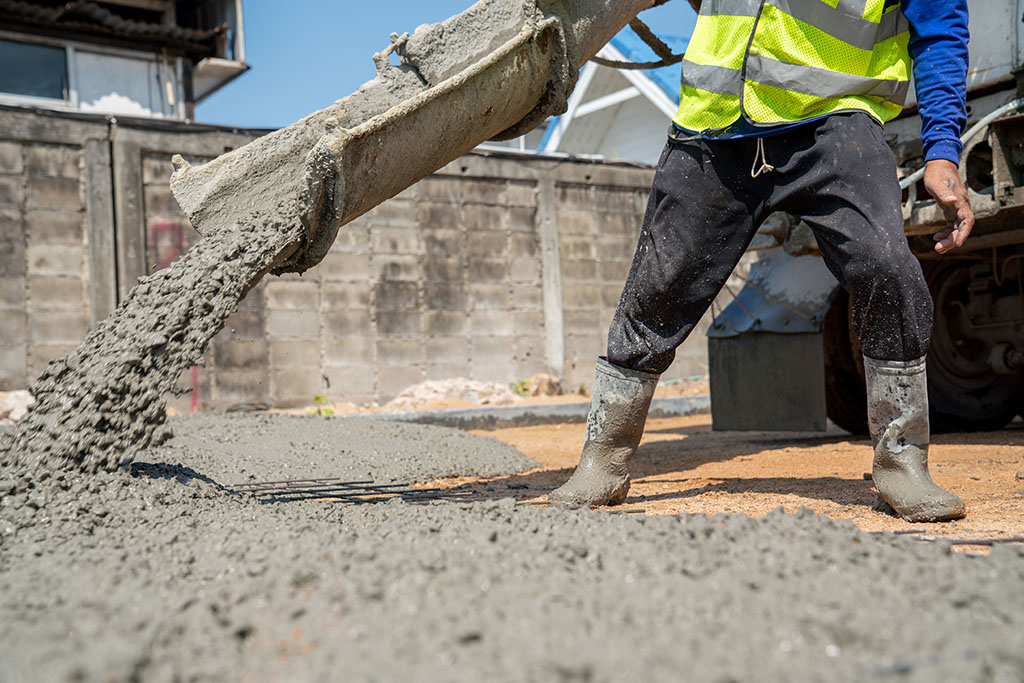Cement Industry
Refractory bricks are widely used in various industrial sectors and high-temperature technical fields and are indispensable production materials for cement enterprises in the clinker calcination process. Alkali and silicon-aluminum refractory bricks are widely used in cement enterprises.
Refractories for the cement industry

The use of refractory fire bricks is widespread in different industrial sectors and high-temperature technical fields, especially in cement production during the clinker calcination process. Cement enterprises commonly use alkali and silicon-aluminum refractory bricks. Magnesia-chrome bricks were widely used in the firing zone of rotary kilns for cement production. However, due to concerns over water-soluble hexavalent chromium pollution, some countries have passed legislation limiting their use.
The cement industry has replaced magnesia-chrome bricks in the firing zone with chromium-free refractory materials such as magnesia-iron and magnesia-calcium bricks. The performance requirements of refractory bricks in different parts of clinker calcination and cooling systems vary, leading to the use of different types of refractory bricks. ommon refractory bricks used in cement enterprises include high alumina bricks, Baiyunshan bricks, magnesia chrome bricks, spinel bricks, anti-flaking bricks, silica molybdenum bricks, and more.
High alumina bricks: are appropriate for various areas in the cement rotary kiln such as preheaters, calciners, tertiary air ducts, decomposition zones, and grate coolers.
Dolomite bricks: are commonly used in the high-temperature sintering portion of the rotary kiln. However, due to its hydration property, the brick may crack and peel off during kiln shutdown. Therefore, they are suitable for long-operating cycle rotary kilns and can be used in the calcination zone. Their durability is longer compared to the original magnesia-chrome brick.
Magnesia chrome brick: introduced in the 1950s, significantly extended the life of the furnace lining and became a leading refractory material for cement rotary kiln linings. With the emergence of large-scale cement rotary kilns in the 1960s, magnesia spinel bricks replaced magnesia-chrome bricks in the transition zone.
To reduce the pollution of hexavalent chromium to the environment, low-chrome magnesia-chrome bricks and chrome-free basic refractory materials have been manufactured to replace magnesia-chrome bricks. While magnesia-chrome brick may be cost-effective, its environmental impact should also be considered. Magnesia-chrome brick contains hexavalent chromium, which is a toxic chemical and a major environmental pollutant. Therefore, its use has been restricted in some countries. It is important to balance the cost-effectiveness of a material with its environmental impact and the potential health risks associated with its use.
In the cement industry, magnesia-iron and magnesia-calcium bricks can replace the original magnesia-chrome bricks in the firing zone, and chrome-free refractories can be implemented.
Magnesia alumina spinel brick: is an environmentally friendly product that contains no chromium and is primarily used in the front and rear transition zones of the rotary kiln.
Magnesia iron spinel brick: is chromium-free and suitable for the entire alkaline zone of the rotary kiln, including the firing zone and transition zone, with excellent ability to make kiln skin.
Anti-spalling bricks: which contain zirconium and high alumina, are excellent options for the transition and decomposition zones of cement rotary kilns and other parts of the kiln, such as the kiln door cover. Silicon mullite bricks, which consist of silicon carbide and mullite added to high alumina bricks, are commonly referred to as silica bricks and are suitable for the upper and lower transition zones and safety zones of rotary kilns. Many enterprises have found that using silica bricks in the upper transition zone of 5,000-ton pre-calciner kilns can result in more than 12 months of service life.

